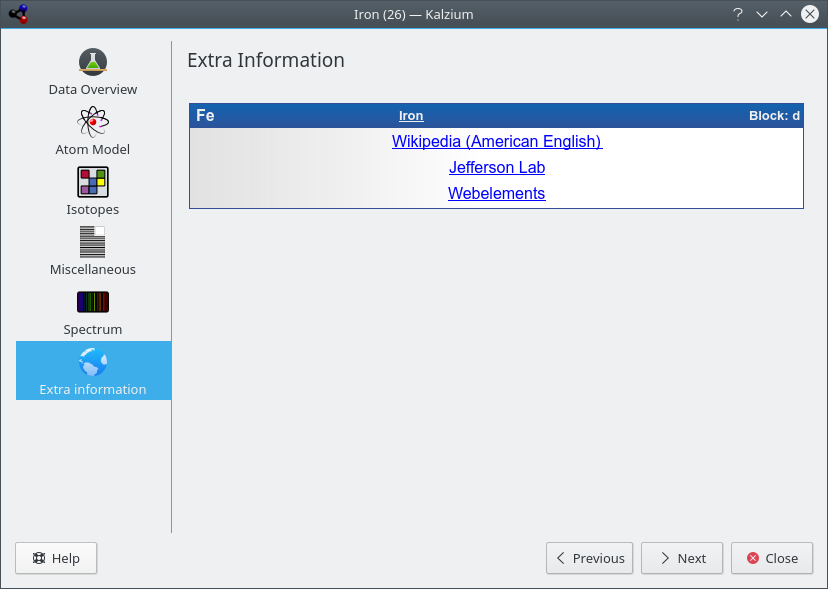The information dialog is accessed by clicking with the mouse button on any element. This is the place to get information about an element. With the buttons at the bottom of the dialog you can change the element which is displayed without closing the dialog.
The Data Overview page tells you about different facts related to the element.
Depending on the data available in Kalzium you will see different radii of the element. The covalent radius is the radius of a non charged atom of the element in a molecule. The could for example be the O-H-distance in Water. The atomic radius is the radius of an elemental atom, e.g. not bound to anything. The van der Waals-radius is defined as the distance of two atoms of the same sort in two equal molecules, for example two carbon-atoms in propane. The last possible radius is the ionic radius including its charge.
The mass of an element is the average mass of all isotopes in relation to their percentage.
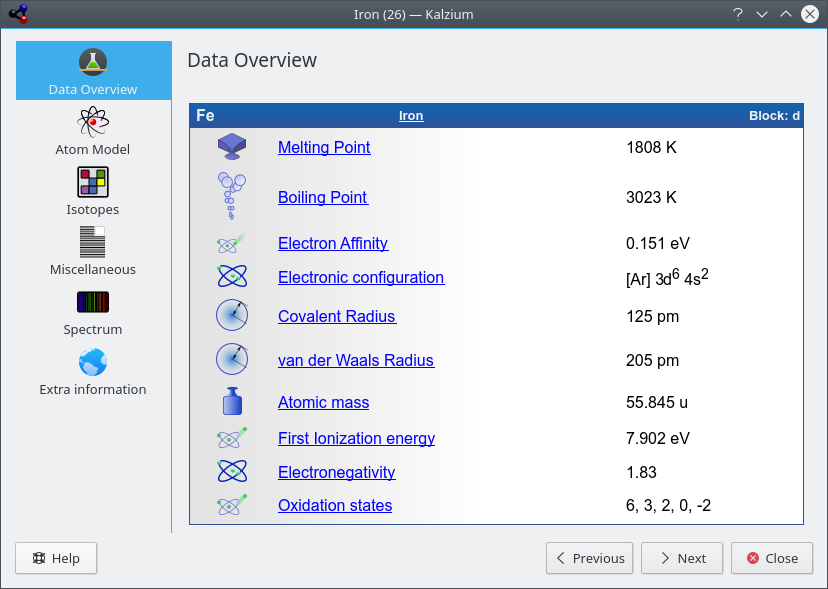
The Atom Model page displays the atomic shells. Every orbit stands for a atomic shell and every yellow circle represents an electron.
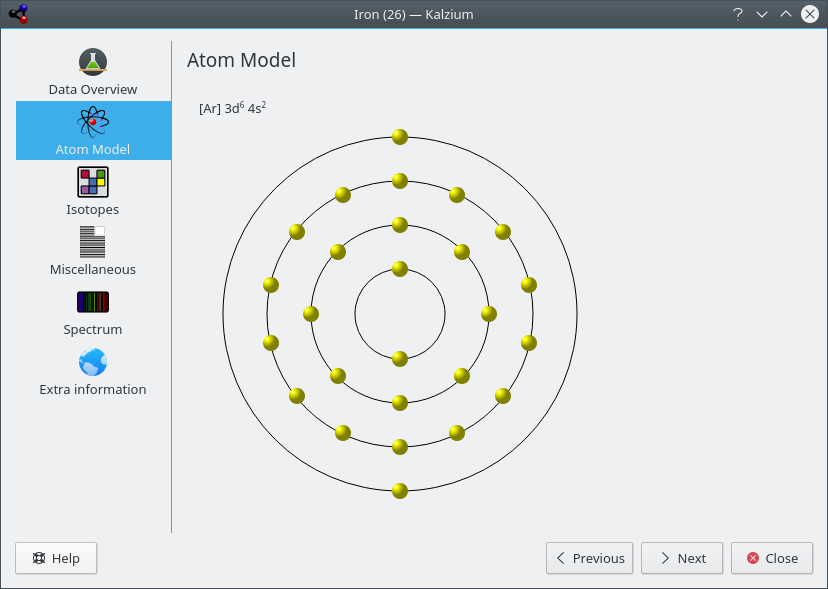
The Isotopes page presents information about the isotopes of an element.
- Mass
The mass of this isotope.
- Neutrons
The number of neutrons this isotope has.
- Percentage
The percentage of atoms occurring that are of this isotope type. Also called abundance.
- Half-life period
Only unstable isotopes have a half-life period. It is defined as the time in which half the isotopes decay.
- Energy and Mode of Decay
Some isotopes are known to emit particle radiation under the process of radioactive decay. Each decay transformation has a typical energy release, which is listed along with the mode of decay.
- Spin and Parity
The spin of the nucleus and its parity.
- Magnetic Moment
The magnetic dipole moment of the nucleus. Measured in units of the nuclear magneton.
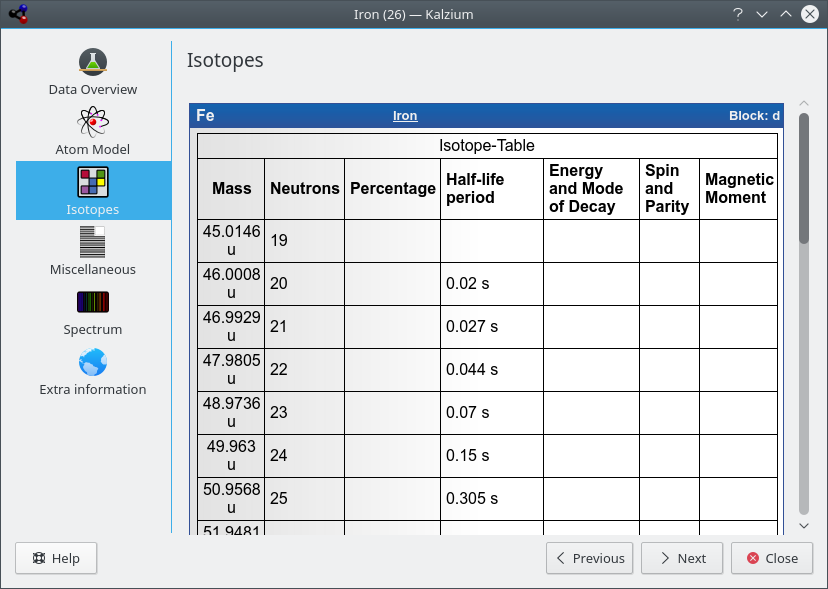
The Miscellaneous page tells you other information about the current element, including when it was discovered and the origin of the name.
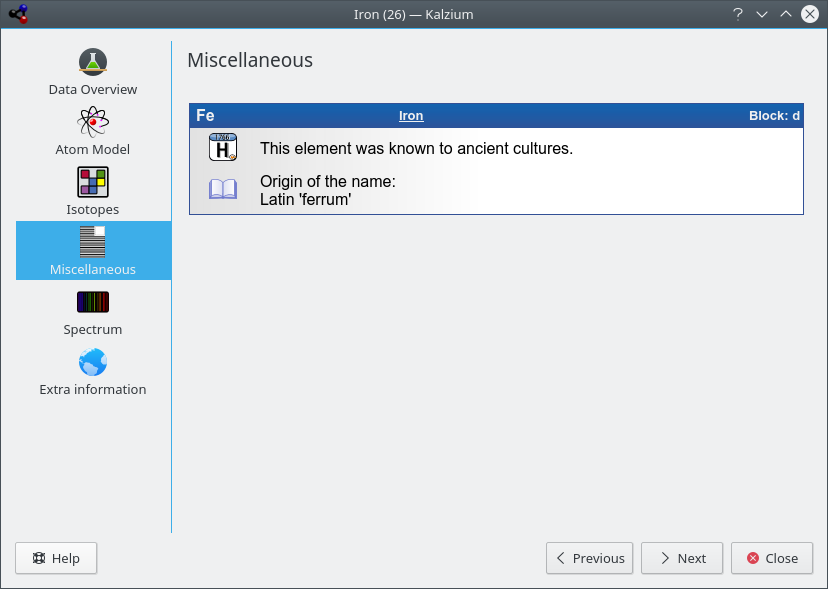
The Spectrum page shows you elements spectrum. You can choose the range of the wavelengths, units and type of the spectrum. The intensity table can be seen at the right bottom part of the page.
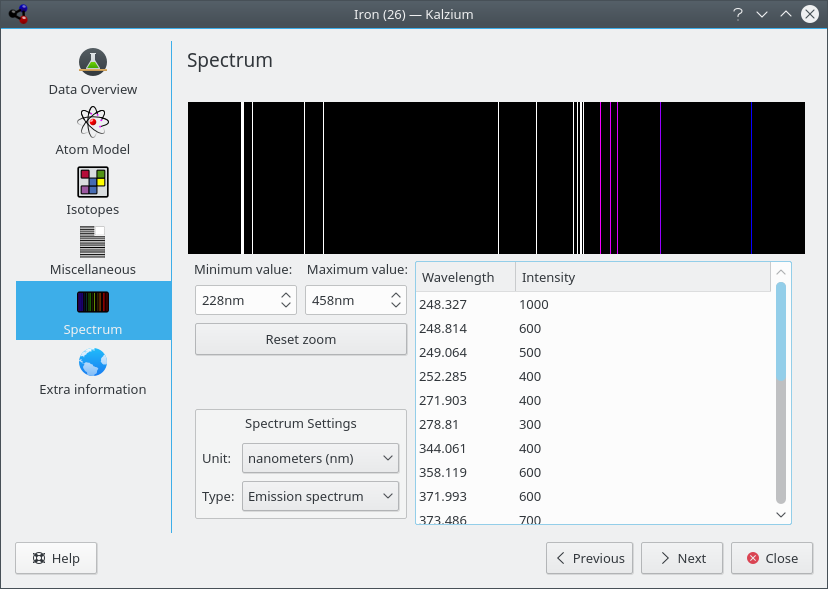
The Extra information page gives you the links to the element pages on Wikipedia, Jefferson Lab, and WebElements.
